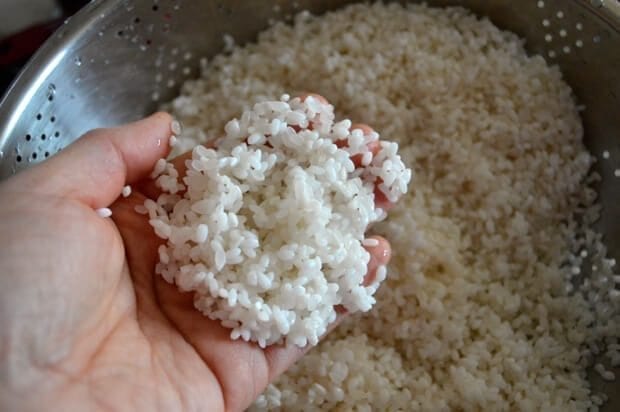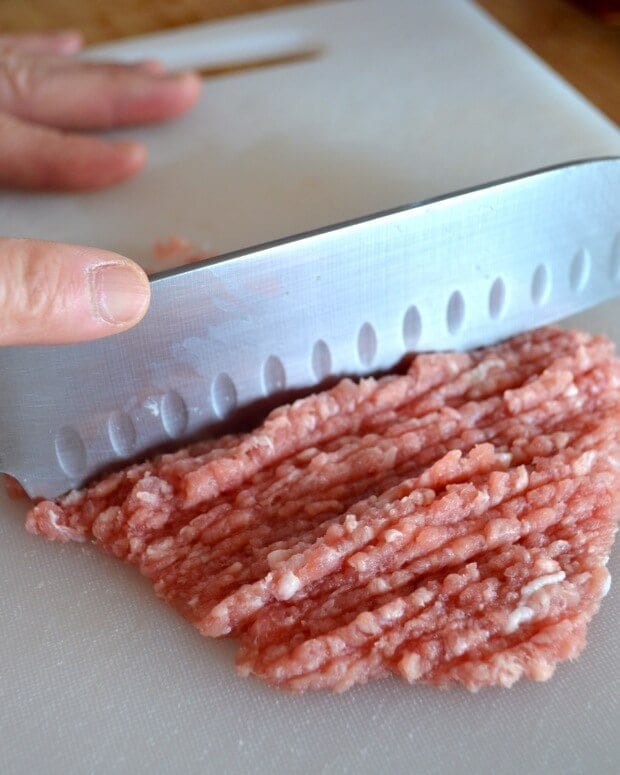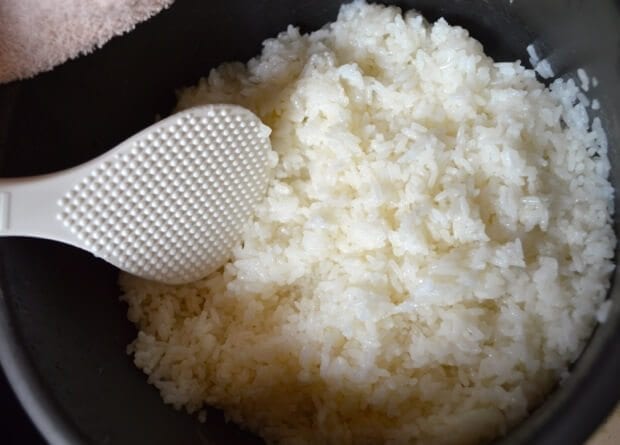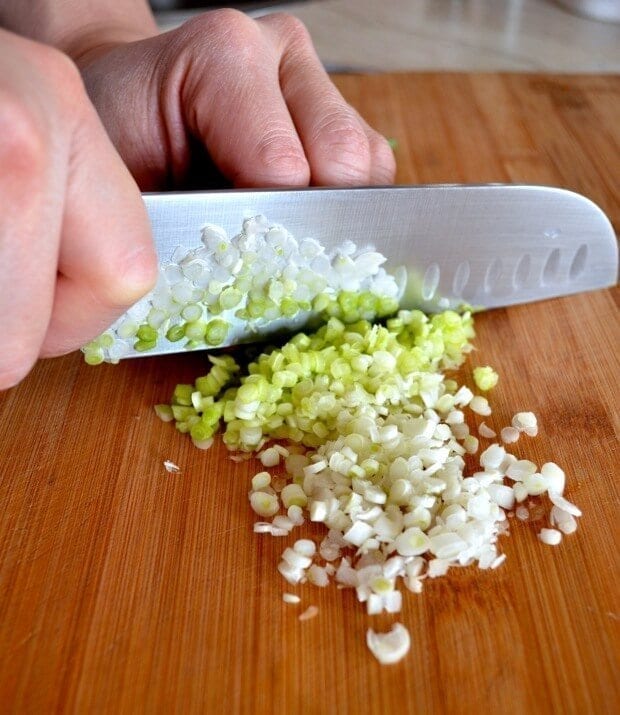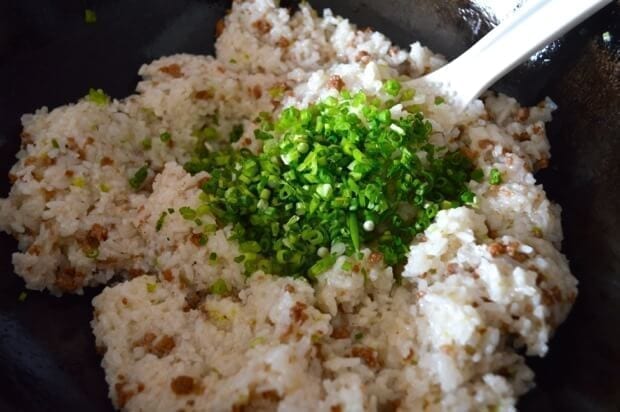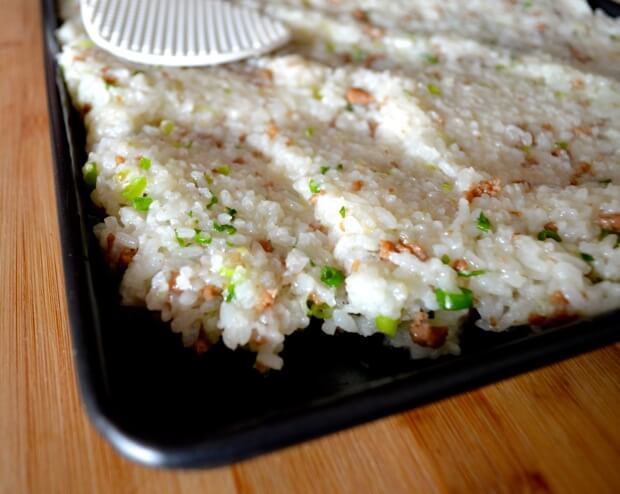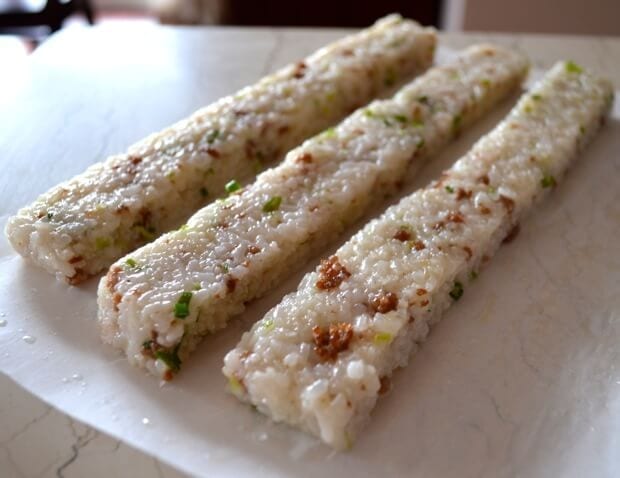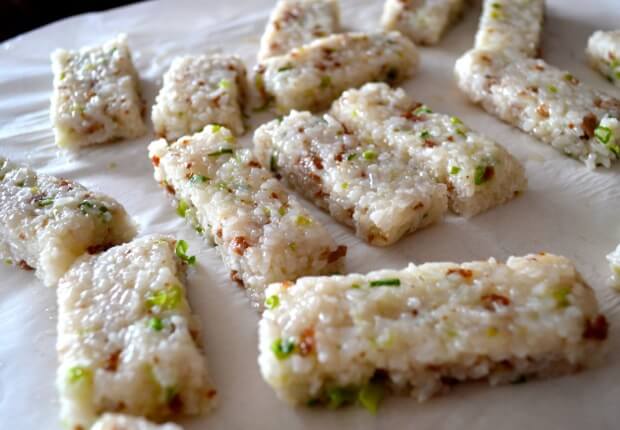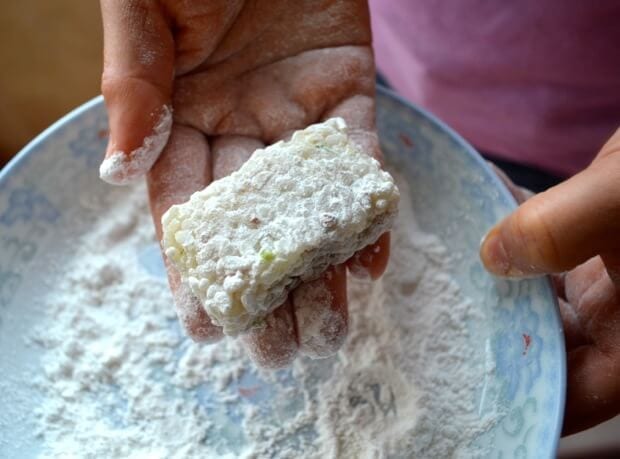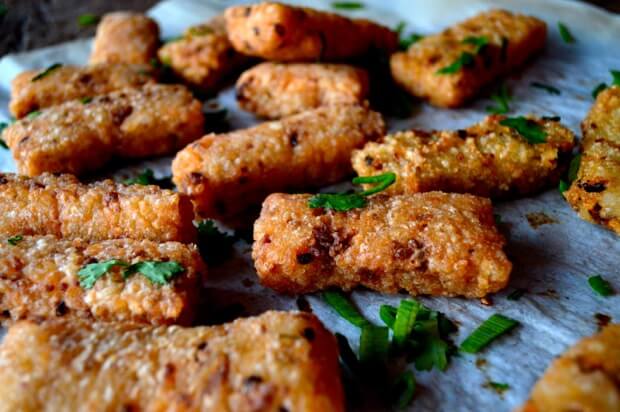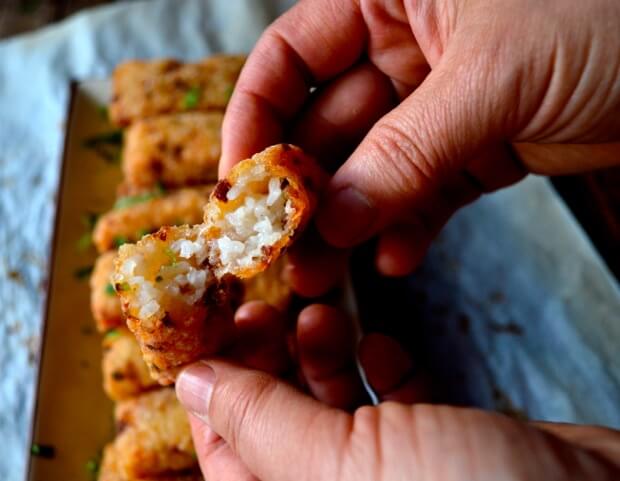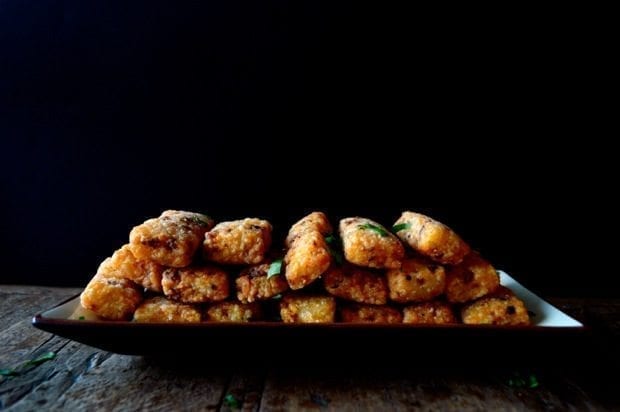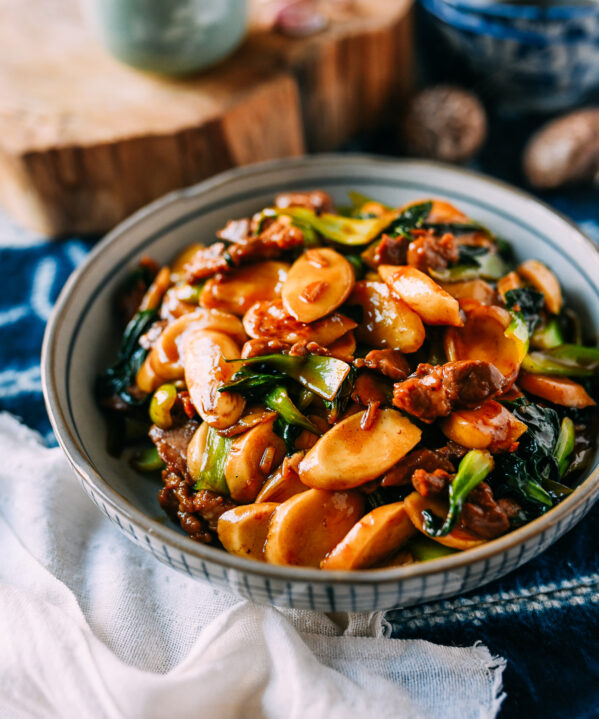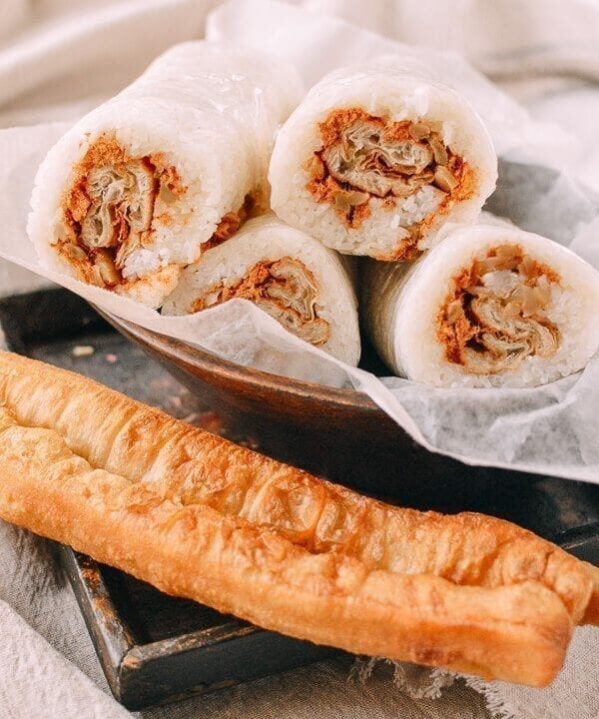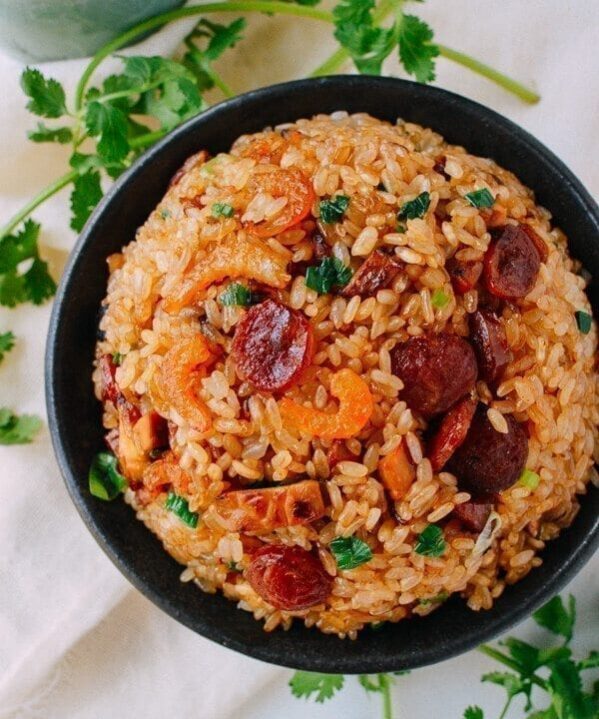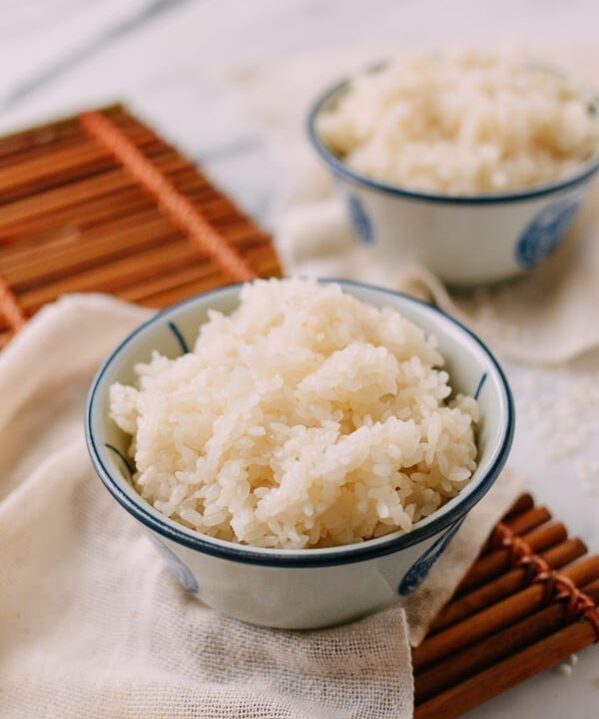They just don’t make ‘em like they used to. Or so I thought.
These ci fan gao, or “rice hash browns,” as Sarah likes to call them, were part of my childhood—a beloved street food that I bought for just a few cents at a time in Shanghai.
It was always a huge treat, because it would take me a while to accumulate enough of those pennies. I was poorer than poor. Even as a teenager, I didn’t even have two coins to rub together most of the time.
On Bill’s first trip to Shanghai back in 1996, I saw ci fan gao being sold on the street, and I was beyond excited. I was jumping up and down in the middle of the street like an idiot when I saw that they were still making them. Bill was appropriately intrigued when he saw my reaction, and he immediately went over to buy some.
We took that first glorious bite, and…disappointment. They looked similar to what I’d had when I was a kid, but didn’t taste the same. Bill looked at me, puzzled. “You must have been really deprived!” he said.
Of course, I knew that he was the one who’d been deprived—deprived of tasting the real thing. Two weeks ago, however, we saw this on the menu at a Shanghainese restaurant in Beijing called 石库门 (Shi Ku Men), ordered it, tasted it, loved it. And—re-inspired—we immediately agreed that we had to make it for the blog.
We’ll keep the name “Sticky Rice Hashbrowns,” though. Try them and you’ll see what we mean. It’ll be the best hash brown you’ve ever had…hold the potatoes.
Recipe Instructions
Rinse your sweet rice (sticky rice) and short grain white rice, and drain excess water. Add 2 ½ cups water and use a rice cooker to cook it.
If you don’t have a rice cooker, follow the directions on the package or use our method for steaming the sticky rice to cook it.
Finely mince the ground pork (really make sure it’s mashed up, almost like a paste) and transfer to a mixing bowl.
Add ½ tablespoon soy sauce, ½ teaspoon five spice powder, ½ teaspoon salt and mix until combined. Heat a splash of oil in a wok using high heat, and stir-fry the ground pork, breaking up any clumps, until browned. Keep the pork in the wok and set aside.
When the rice is cooked, take it out of the pot to cool until just warm and transfer to the wok with the pork, add the scallions and ¾ teaspoon salt. Using a spatula, fold and combine the mixture until everything is uniformly distributed.
Line a small sheet pan or shallow casserole dish with plastic wrap. Pour 1 tablespoon of oil into the lined pan and coated the plastic wrap evenly.
Pour the rice mixture into the pan and use the spatula to spread the rice evenly onto the pan, creating a large rectangular cake about 1 inch thick. You may have to dip the spatula in water to prevent the rice from sticking.
Once the rice rectangle is completely cooled, dust your cutting board with rice flour and pour the rest of the rice flour onto a plate for dredging. Next, flip the rice rectangle onto the board and remove the plastic.
Grab a bowl of hot water. Dip your knife in the hot water, and cut the rice block into rectangles, rinsing your knife in the hot water after each cut.
Work gradually and cut a few rectangles at a time.
Dredge them all around with a light coating of rice flour and line them up on your baking sheet.
Make the dipping sauce by combining soy sauce, minced scallion, sesame oil, sugar, and chili oil or Sriracha (optional), and set aside.
Heat the oil to about 350-375 degrees and fry the rice sticks in batches until golden brown. Drain on paper towels. Serve immediately with the dipping sauce, or sprinkle with salt.
Sticky Rice Hashbrowns (Ci Fan Gao)

Ingredients
For the Sticky Rice Hash Browns:
- 1 1/2 cups sweet rice (sticky rice)
- 1 cup short grain white rice
- 2 ½ cups water (600 ml)
- 4 oz. ground pork (110g)
- ½ tablespoon soy sauce
- 1/2 teaspoon five spice powder
- 1 ¼ teaspoons salt
- 1/3 cup scallions (finely chopped)
- ½ cup rice flour for dredging
- 4-6 cups peanut oil (for frying)
For the optional dipping sauce:
- 1 tablespoon soy sauce
- 1 tablespoon minced scallion
- ½ teaspoon sesame oil
- Pinch of sugar
- 1 teaspoon chili oil or Sriracha (optional)
Instructions
- Rinse your sticky rice and short grain rice and drain excess water. Add 2 ½ cups water and use a rice cooker to cook it. If you don’t have a rice cooker, follow the directions on the package.
- Finely mince the ground pork (really make sure it’s mashed up, almost like a paste) and transfer to a mixing bowl. Add ½ tablespoon soy sauce, ½ teaspoon 5 spice powder, ½ teaspoon salt and mix until combined. Heat a splash of oil in a wok using high heat, and stir-fry the ground pork, breaking up any clumps, until browned. Keep the pork in the wok and set aside.
- When the rice is cooked, take it out of the pot to cool until just warm and transfer to the wok with the pork, add the scallion and ¾ teaspoon salt. Using a spatula, fold and combine the mixture until everything is uniformly distributed.
- Line a small sheet pan or shallow casserole dish with plastic wrap. Pour 1 tablespoon of oil into the lined pan and coated the plastic wrap evenly. Pour the rice mixture into the pan and use the spatula to spread the rice evenly onto the pan, creating a large rectangular cake about 1 inch thick. You may have to dip the spatula in water to prevent the rice from sticking.
- Once the rice rectangle is completely cooled, dust your cutting board with rice flour and pour the rest of the rice flour onto a plate for dredging. Next, flip the rice rectangle onto the board and remove the plastic. Grab a bowl of hot water. Dip your knife in the hot water, and cut the rice block into rectangles, rinsing your knife in the hot water after each cut. Work gradually and cut a few rectangles at a time. Dredge them all around with a light coating of rice flour and line them up on your baking sheet.
- Make the dipping sauce by combining the ingredients in a mixing bowl and set aside.
- Heat the oil to about 350-375 degrees and fry the rice sticks in batches until golden brown. Drain on paper towels. Serve immediately with the dipping sauce, or sprinkle with salt.

